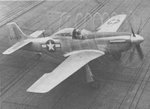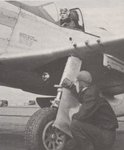First thank you for your response in advance.
I am looking for photos and color plate images of the only B-25 which was
altered for cat launching and wire trapping onboard a carrier. This is PBH-1H
43-4700 BuNo 35277) that was modified for aircraft carrier catapult launch
and arrests. First landings and catapult takeoffs took place aboard the USS
Shangri La ( CV-38 ) on November 15, 1944.
I am looking for photos and color plate images of the only B-25 which was
altered for cat launching and wire trapping onboard a carrier. This is PBH-1H
43-4700 BuNo 35277) that was modified for aircraft carrier catapult launch
and arrests. First landings and catapult takeoffs took place aboard the USS
Shangri La ( CV-38 ) on November 15, 1944.








